The Rundown: The One With Lots of Art and Some Star Wars (5/4/21)
I mean, look at what day it is
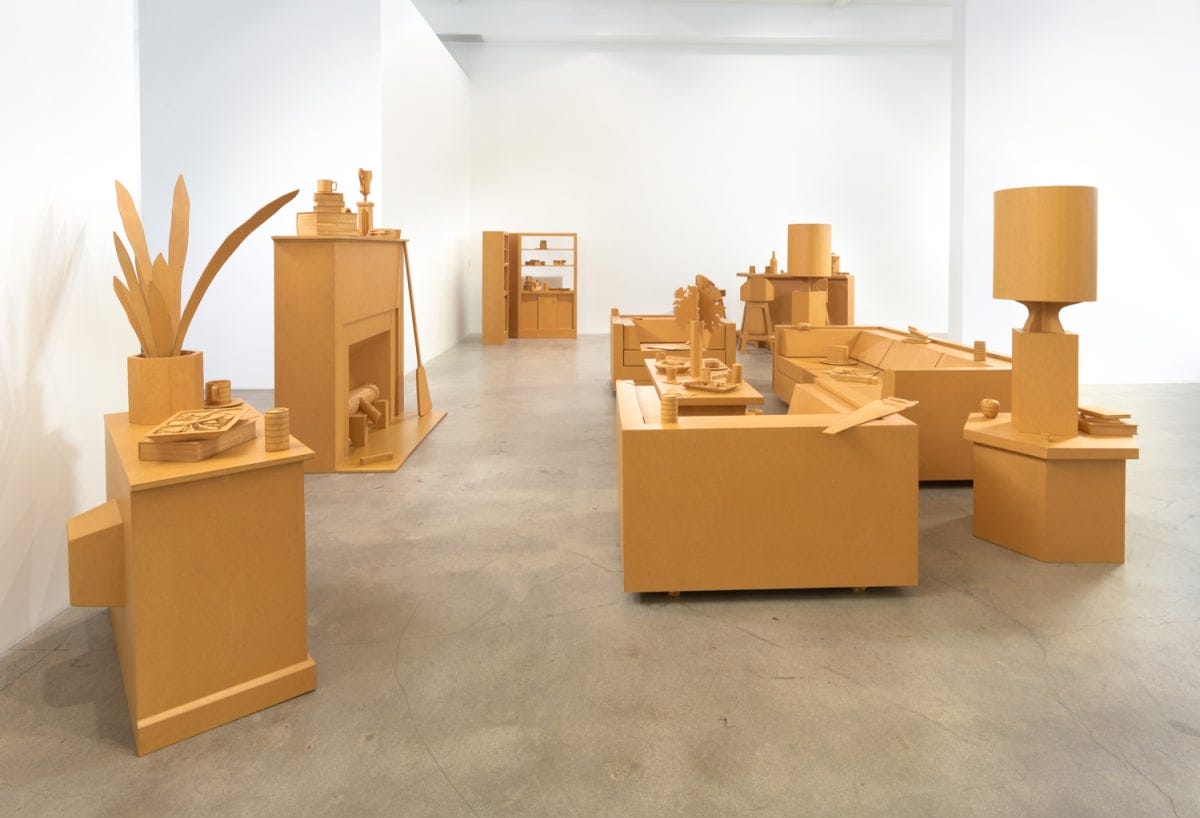

For our second weekly Rundown we’re getting arty. This edition features seven reviews about six different projects, with two physical art installations, one VR art installation and some Star Wars pinball in the mix. In honor of Star Wars Day, of course. (Also, it was just released last week and Patrick and I are that kind of nerd.)
We’ll be talking about some of these LIVE on this week’s edition of the Review Crew show — 5PM PDT, 8PM EDT in the Discord. It’s a good time. Pop on by!
Missed last week’s Rundown? We got you.

Block Association Project — Wolf 359
Online, $20 (Run Completed)
The absurd emails started flowing in a few days before the event even started; it was almost as if I’d been thrown into a strange concoction of a Yahoo! Group mated with the worst of Nextdoor. There were requests for mutual aid alongside complaints from about the urination habits of one’s dogs as well as demands to keep the community mailing list a politics-free zone and the inexplicable ramblings of a Baby Boomer who’s just discovered the notion of the Internet as a microphone.
Block Association Project, written by Michael Yates Crowley and created by Wolf 359, has been translated from its original IRL format into a Zoom show. The production seeks to skewer notions about what it means to be a community, particularly poking fun at the damage people can do to one another in the name of safety, cleanliness, and property values. Of course, for pandemic reasons, the neighborhood group is meeting over Zoom. (The performance is also thoughtfully ASL interpreted and captioned.) The diverse cast includes a well-meaning white woman who is leading the meeting; an at-home-due-to-COVID, extra woke college kid; a deaf neighbor with a dog; an aggressively neat and tidy Latina real estate agent; an older Black woman who really just seems tired of it all; an out-of-touch Asian academic; and an older basement-dwelling curmudgeon who wants nothing more than to burn the entire enterprise to the ground. And, soon, with the discovery of a secret community nest egg, all hell breaks loose.
But despite the promising premise of Block Association Project, the content suffers from a variety of maladies, not the least of which is the laundry list of topics it tries to cram into its story: from dog pee and getting new streetlights to crises around refugees and immigration to domestic labor issues and access to the Internet by older adults. We, the audience, also periodically get thrown into a breakout room to discuss a heavy topic with one of the show’s characters but it is always the same character, unfortunately. And six minutes seems like hardly enough time to discuss what community means to me or, say, how elections in general should work. (Let’s just say there were a lot of long awkward silences with everyone on mute.)
Overall, the pacing is uneven, the stereotypes on display feel paper-thin and uninteresting, and the performance’s energy runs out of steam well before the one hour and 45 minutes runtime (without intermission) is concluded.
— Kathryn Yu
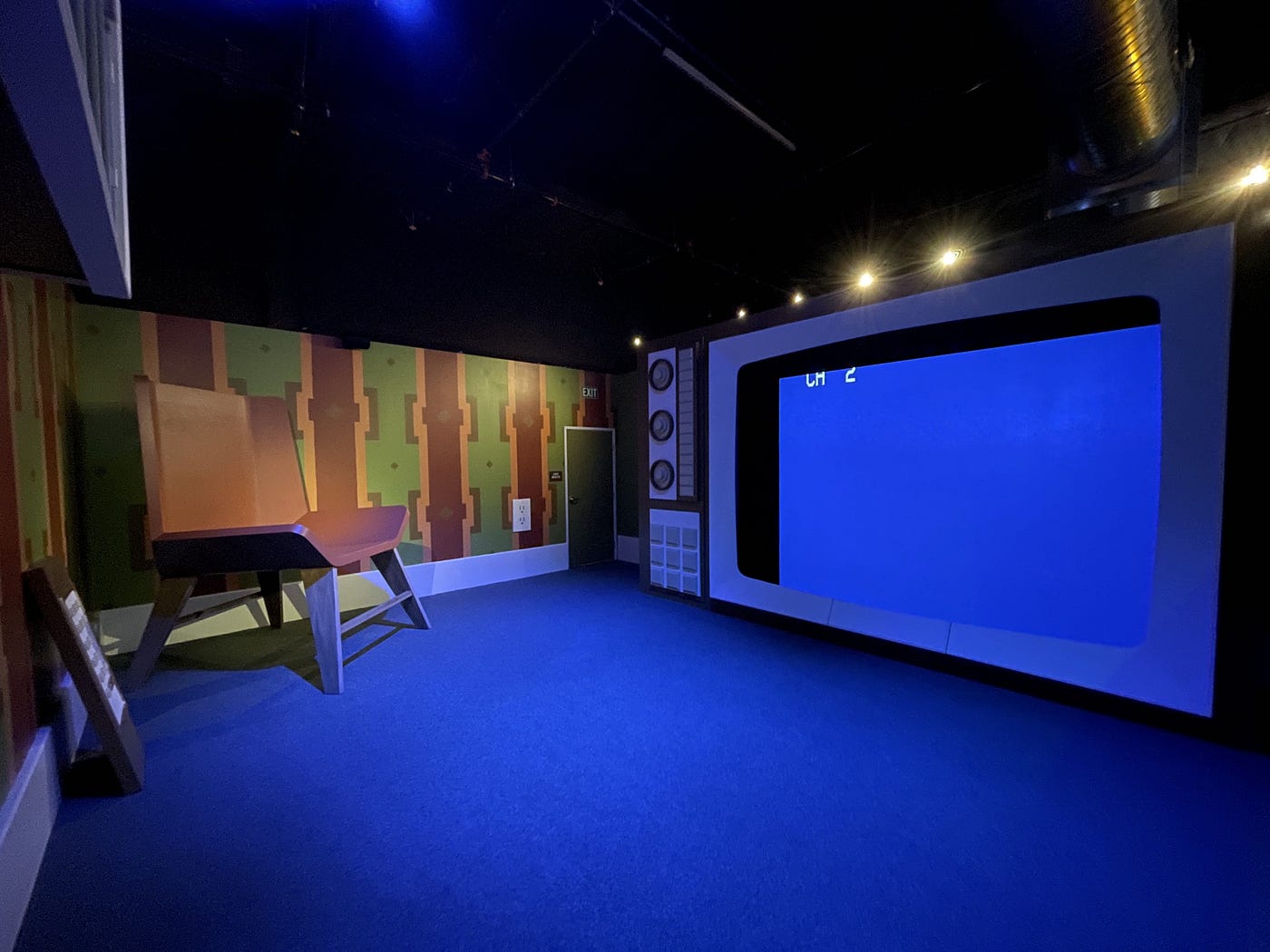
Elsewhere at the Madcap Motel
Los Angeles, $30–40
This pandemic-delayed evolution of the pop-up formula offers more than your cookie cutter selfie-palace, while not reaching for the sheer awe of a Meow Wolf facility. Story gets woven into the requisite photo opportunities thanks to a wonderfully game cast of actors and clever bookend themes that make one wonder just how far the Madcap Motel crew would be willing to push the character moments. The long term fate of Elsewhere likely lays with how much story Instagram Influencers and TikTok Teens want in their playgrounds. Right now the Motel makes for a fun stop on a day out with friends in DTLA’s Art District.
— Noah Nelson, read his Full Review

In My Own Skin — Illya Szilak and Cyril Tsiboulski
VR Chat, Free
The tl;dr here is simple: this is brilliant. If you have a PC enabled VR headset and VR Chat on your rig, then just click this link and check it out. It’s free, after all.
Now for a slightly longer review. Illya Szilak and Cyril Tsiboulski have built a fantastic photography exhibition in VR Chat that leverages the features of the platform — swappable avatars, non-Euclidian geometry — to create an insightful exploration of identity and gender.
The creators play with the concept of “facade,” first with the avatars and then with the main gallery space which manifests as a “town” made up of movie set style structures, complete with support struts holding them up from behind. It’s provocative details like that which elevate the act of VR worldbuilding into Art. The one real trick: it’s possible that someone might miss out on the centerpiece, as the door which leads to the installation is directly behind the spawn-in point of the avatar gallery, and I can imagine someone popping in, trying on a few avatars, and thinking that’s all there is to it. Just remember that curiosity is rewarded.
— Noah Nelson
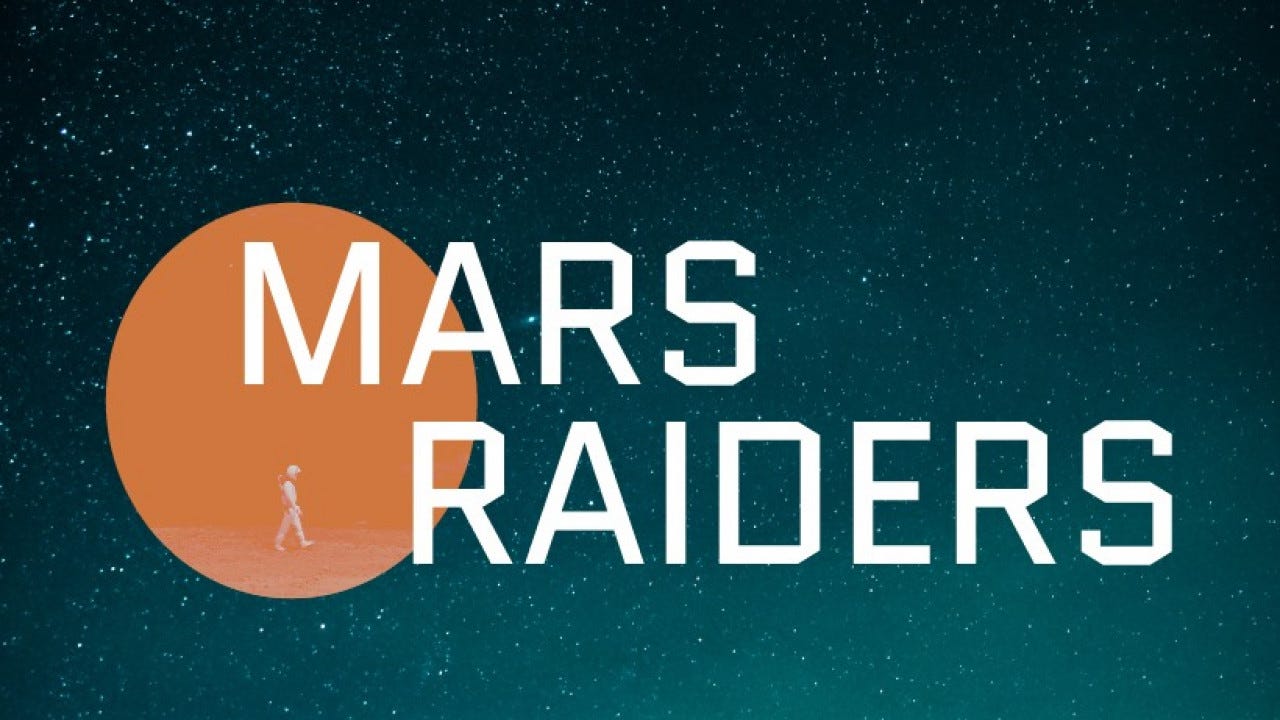
Mars Raiders — Totally Human
Online, £15 (Run Completed)
I love space stuff. Always have. Hell, I love it enough that I was able to make it through the ridiculously slow first few episodes of For All Mankind this past month on the promise that it gets good. (It does. It’s great. Mad Men meets NASA.)
So I wish I loved Mars Raiders. But I didn’t. The main problem: the central dramatic crisis unfolds at first as if it were a hiccup on a Zoom call. While I appreciate the choice to play with the affordances of the platform — it’s something we preach here after all — just… please not that. Chunks of the interaction in the piece revolve around verbally relaying messages between performers who can actually hear each other, leaving us to suspend our disbelief.
Which could be a great set-up for comedy if the incentives were there for the audience to mess with the performer, who seem ready to roll with it, but with the escape game like framing — an scientist is stuck on an out of control solo capsule, hurtling towards a hostile space station with minutes to spare before collision and no clean answers on who they should trust — runs counter to any in-game miscommunication hijinks.
There’s some good world-building and game actors, but the gameplay felt thin.
— Noah Nelson
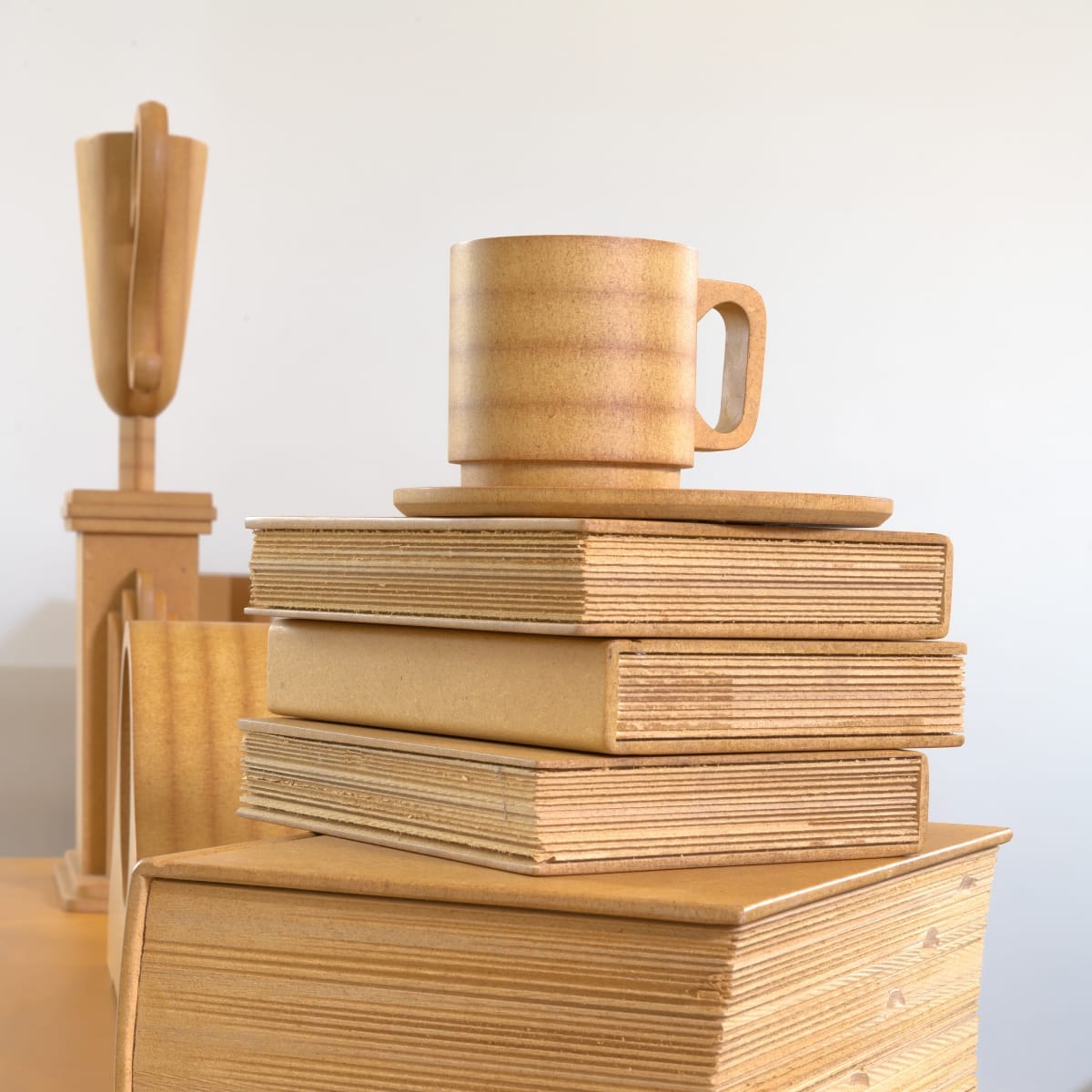
Roland Reiss: The Castle of Perseverance — Diane Rosenstein Gallery
Los Angeles, Free, Reservation Required
In Hollywood, there’s a living room made entirely of particleboard and it is wonderful.
Roland Reiss: The Castle of Perseverance is a “typical American middle-class living room of the 1970s,” replete with a sofa, fireplace, half-consumed TV dinners, a gun, a fish tank (with fish!), and much more — all in particleboard.
Originally constructed in 1978, the uniformity of this industrial material creates an odd, visceral desire to touch everything; there’s a tactile vibration to the particleboard. Its embodiment is both flat and dynamic. Walking through the installation feels like stepping onto a theatrical stage. The furniture and objects seem temporary, like stand-ins. There’s a tension, a sensation that a rehearsal was interrupted midway through Act II, and now, with the story unfinished, the viewer becomes a type of forensic investigator. The sculpture’s medium adds a surreal layer to this detective work: everything stands out because everything’s the same.
This recreation is offset by a collection of Reiss’ miniatures: plexiglass boxes house corporate figurines, fantastical film sets, and domestic dioramas. The pairing of the life-sized living room and the tiny models was, Reiss wrote, “a chance for me and others to experience the difference between my tableaus and life scale. The miniature is automatically experienced as fictional because the scale is reduced. In life scale, things immediately become real.” Juxtaposed with the miniatures, the cartoonish, two-dimensional look of the living room begets a new suspension of disbelief, one where the viewer experiences a distorted sense of scale; the gallery itself becomes another vitrine, with the viewer adopting the role of a figurine. This vacillation between subject and analyst is a transportive, dreamlike delight.
— Laura Hess
Star Wars Day Double Take
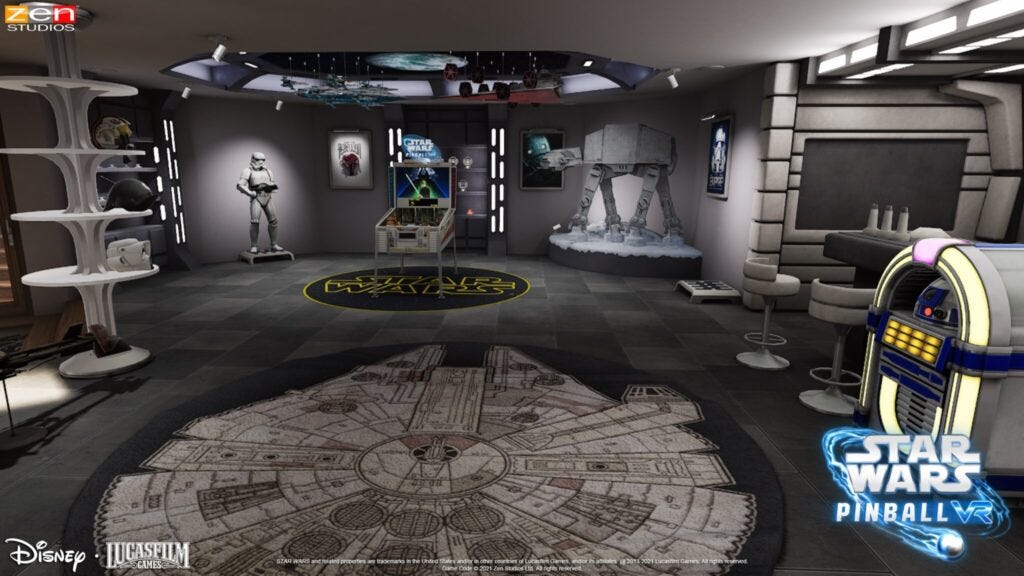
Star Wars Pinball VR — Zen Studios
Oculus, $24.99
How much do you like Star Wars? How much do you like pinball?
These are the operative questions if you’re looking at this new release for the Oculus Quest. If the answer to both questions is: A LOT, then you, like me, will be willing to tough out some rough UI to get to the good stuff.
Zen Studio Pinball FX series’ whole deal is making licensed virtual pinball machines, usually for PC and console games, but VR versions are kind of a no-brainer. Or should be a no-brainer. Turns out: they need a lot of brains. Because while you want to just walk up to a machine and start using your hands, it’s not going to be like that. In fact, everything has a layer of clunky abstraction to it. From using the Touch controllers in a way that’s a bit more like a gamepad to the fact that only one machine exists in your “fancave” and it transforms into the eight different table options. Why they did it this way, I’ll never know.
The unlocks are neat: trophies, collectables, and posters you can use to decorate your “fancave.” Albeit with a clunky UI that makes the actual act of decorating a bit of a pain. It does look nice once you get the stuff in place. If you can get past all that, there are some GREAT pinball tables in here, and actually playing them is a joy. So yeah, I’m glad I bought it, I just wish they’d make some majorly different choices about how it all works.
— Noah Nelson
For suckers like me, chances are you’ve long, long ago passed the point of questioning your purchasing habits for Star Wars merchandise. If that comment resonates with you as a owner of a VR headset, you’ll have a blast playing Star Wars VR Pinball.
I’m surprised with the depth and variety of the eight pinball machines. While they’re similar, none of the machines are a carbonite copy clone of another in theme nor function. The VR elements layered onto these machines, both in and around, make the whole experience enjoyably come to life. The campaign mode is the best part, with specific challenges that ask more of me than to mindlessly play in arcade mode for hours upon end.
It’s in the “why you should play in VR” selling points for Star Wars VR Pinball that are coming up short like Red Leader’s proton torpedo. In theory, the practice of walking around and decorating your basement “fan cave” is a noble one. It is fun to spend a few minutes trying to decide which poster art or life-sized figurine I’ve unlocked to put up. Yet it’s a sterile affair. You can’t “play” with any memorabilia. Worse, there’s no way to share your custom designed “fan cave” with anyone, leaving you to haunt it alone like a Jedi in exile.
Furthermore, there are VR minigames you can play within some of the machines. I haven’t come across a single one yet. I wish there was a way I could play them separately, outside of the machines.
If you like Star Wars, pinball machines, or are in desperate need to play a VR game that isn’t a shooter, the Force will be with you. Otherwise, Star Wars VR Pinball is currently the equivalent of living in an SNL sketch.
— Patrick McLean
Discover the latest immersive events, festivals, workshops, and more at our new site EVERYTHING IMMERSIVE, new home of NoPro’s show listings.
NoPro is a labor of love made possible by our generous Patreon backers. Join them today!
In addition to the No Proscenium web site, our podcast, and our newsletters, you can find NoPro on Twitter, Facebook, YouTube, Instagram, in the Facebook community Everything Immersive, and on our Discord.